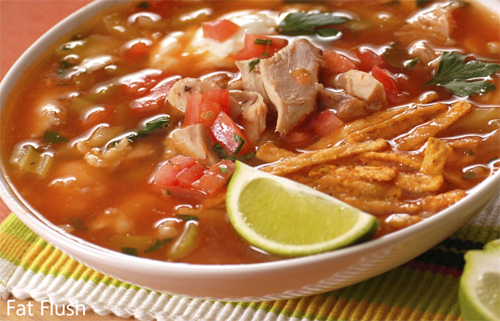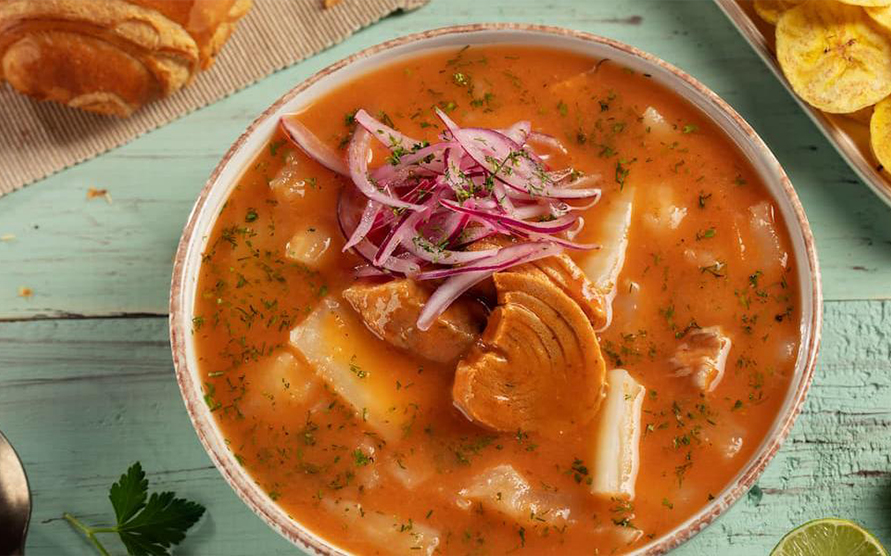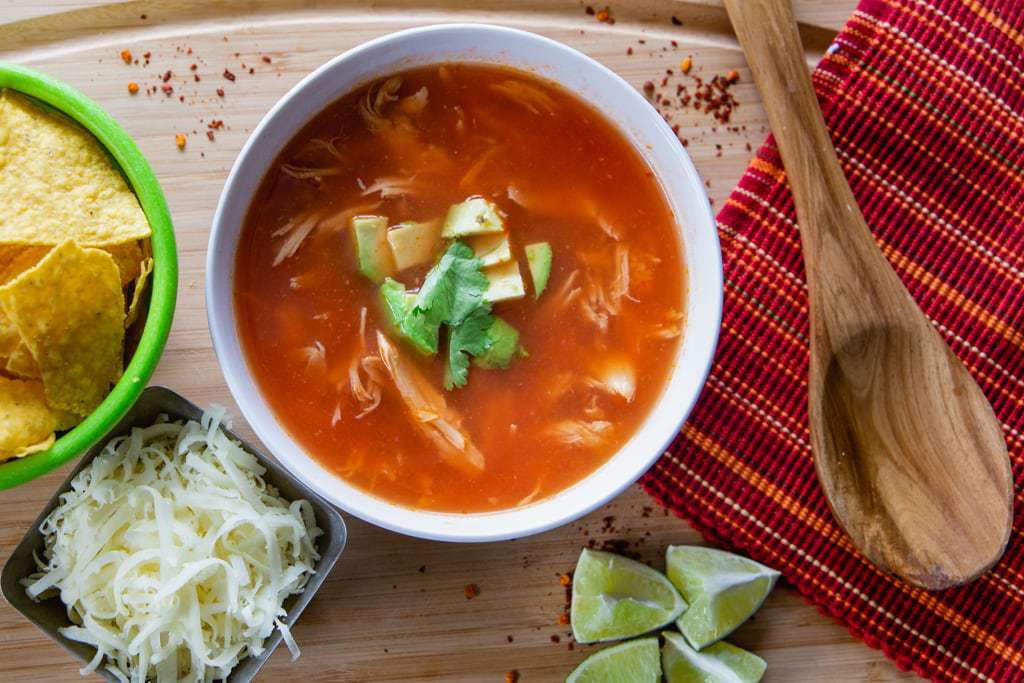Sopa Dulce Y Rara - A Unique Culinary Delight
Have you ever considered a dish that plays with your expectations, something that offers a taste experience unlike anything else? There is a concept that truly captures this idea, something called "sopa dulce y rara." It is a name that, you know, immediately sparks a bit of wonder, suggesting a blend of flavors that might seem quite unusual at first thought. This kind of food item, it truly invites you to think about what a meal can be, pushing the typical boundaries of what we usually expect from a bowl of warmth.
When you hear "sopa," your mind probably goes to savory broths, maybe with some vegetables or a bit of meat, something that feels familiar and comforting. But then, the addition of "dulce y rara," which translates to "sweet and strange," adds a whole different layer to the picture. It suggests a creation that steps outside the ordinary, a preparation that could involve elements you would not typically put together in a soup. This combination, in a way, makes you pause and think about the possibilities, doesn't it?
This particular culinary idea, "sopa dulce y rara," represents a kind of adventure for your taste buds, a chance to experience something that challenges your preconceptions about food. It is, basically, about exploring new sensations, about letting go of what you think soup should be. This approach to cooking, you see, often leads to truly memorable dishes, ones that leave a lasting impression long after the last spoonful has gone. It is a concept that, in short, celebrates creativity in the kitchen.
Table of Contents
- What is Sopa Dulce y Rara?
- The History Behind Sopa Dulce y Rara
- Why is Sopa Dulce y Rara a Sweet and Strange Soup?
- How Does One Prepare Sopa Dulce y Rara?
- Variations of Sopa Dulce y Rara Across Cultures
- Can Sopa Dulce y Rara Be a Main Dish?
- The Experience of Tasting Sopa Dulce y Rara
- Where Can You Find Sopa Dulce y Rara?
What is Sopa Dulce y Rara?
The term "sopa dulce y rara" speaks to a kind of liquid meal that does not fit into the usual categories. It suggests a dish where sugary notes meet something unexpected, something that might make you tilt your head a little. This could mean a soup that uses fruits as a primary component, perhaps even some dairy elements, or maybe spices that are not typically found in a savory broth. It is, in a way, about a food item that makes you guess what is coming next with each taste. The idea of "sopa dulce y rara" really challenges what we generally expect from a soup bowl.
Picture a warm liquid, perhaps with a creamy feel, holding pieces of something soft and yielding. It might have a gentle sweetness, maybe from natural sugars found in root vegetables or certain fruits. Then, the "rara" part could come from an herb, a spice, or even a texture that you do not commonly associate with a sweet dish. It is, quite simply, a dish that plays with your senses, making you think about how different tastes can work together. This kind of "sopa dulce y rara," you know, often becomes a topic of conversation at the table.
Some versions of "sopa dulce y rara" might be served as a starter, a way to awaken the palate before a larger meal. Others might be a dessert, a warm, comforting end to an evening. It could also be a kind of special treat, something enjoyed on its own during a quiet moment. The beauty of this concept, you see, is its openness to interpretation, allowing for many different forms and purposes. It truly represents a creative approach to what food can be, offering something quite different from the norm, which is, honestly, a pretty cool thing.
- Kelsey Lawrence Fanbus Leaked
- Culos En La Calle
- Trudi Daniels Age
- Sonic 3 Movie Concept Art
- Pace Car Garage
The History Behind Sopa Dulce y Rara
The idea of a "sopa dulce y rara" probably has roots in various traditions where sweet and savory elements were combined long ago. Think about ancient cultures that used honey or fruit in their main courses, or those that prepared grain porridges with added sweetness. These practices, in some respects, laid the groundwork for dishes that defy easy categorization. It is not a single invention, but more of a natural progression of culinary exploration over many years. This kind of blending of tastes, you know, has been a part of human eating habits for a very long time.
In many parts of the world, people have traditionally used what was available, and sometimes that meant combining ingredients in ways that seem unusual to us now. A sweet soup might have been a way to use up overripe fruit, or to make a simple grain more appealing. The "rara" aspect could have come from a local herb with a unique scent or a spice brought in through trade routes. It is, basically, about resourcefulness and a willingness to experiment with what the land offered. This historical context for "sopa dulce y rara," you know, gives it a certain depth.
While there might not be one specific historical record for "sopa dulce y rara" by name, the spirit of it exists in many regional cuisines. Consider fruit soups from Scandinavian countries, or certain sweet and sour preparations in Asian cooking. These dishes, in a way, share a similar philosophy of bringing together seemingly opposite flavors to create something new. It shows that people, for a long time, have enjoyed playing with food, pushing the boundaries of what is considered a meal. This continuous exploration, you see, helps explain how a concept like "sopa dulce y rara" might have come about.
Why is Sopa Dulce y Rara a Sweet and Strange Soup?
The "sweet" part of "sopa dulce y rara" often comes from ingredients that naturally contain sugars. This could be things like certain root vegetables, various kinds of fruit, or even a touch of honey or molasses. The aim is not necessarily to make it taste like a dessert, but to introduce a gentle sweetness that balances other elements. It is about creating a flavor profile that is not just savory, but has an underlying pleasantness that surprises you. This sweetness, you know, can really change the whole character of a soup.
The "strange" aspect, the "rara" part, is where the real fun begins with "sopa dulce y rara." This could refer to an unexpected ingredient, like a particular spice blend that is not common in soups, or perhaps a texture that you do not anticipate. It might be a hint of something sour, or a slightly bitter note that provides contrast. Sometimes, the strangeness comes from the way the ingredients are prepared, or how they interact when combined. It is, in a way, about an element of surprise, something that makes you think, "What was that?"
This combination of sweet and strange in "sopa dulce y rara" is what makes it stand out. It is a dish that does not settle for just one flavor dimension. Instead, it invites your palate to explore different sensations at once. This interplay of tastes, you see, can create a truly memorable eating experience, one that is both comforting and exciting. It shows that food does not always have to follow strict rules, and that sometimes, the most interesting dishes are the ones that break the mold a little bit, which is, honestly, a pretty cool thing.
How Does One Prepare Sopa Dulce y Rara?
Preparing a "sopa dulce y rara" often begins with a base liquid, which could be a light vegetable broth, a fruit juice, or even a dairy product like milk or coconut milk. The choice of base sets the stage for the flavors to come. From there, one might introduce sweet elements, such as pureed squash, baked apples, or even a handful of dried apricots. These ingredients, in some respects, lay down the sweet foundation for the dish. It is, basically, about building layers of taste from the very start.
The "rara" elements for "sopa dulce y rara" come next. This could involve adding spices that are not typical for soup, like cardamom, star anise, or a touch of chili powder for a gentle warmth. Sometimes, it is about a specific herb, or even a surprising garnish like toasted nuts or a sprinkle of something crunchy. The method of cooking might also contribute to the strangeness, perhaps a slow simmer that brings out deep, complex flavors. This step, you know, is where the dish truly gets its unique character.
The process of making "sopa dulce y rara" often involves a bit of experimentation, a willingness to adjust and taste as you go. It is not about following a rigid recipe, but more about understanding how different flavors interact and finding a balance that feels right. The goal is to create something harmonious yet unexpected, a dish that makes you think and enjoy at the same time. This kind of cooking, you see, is truly a creative act, allowing for personal touches and discoveries, which is, honestly, a pretty neat thing to do in the kitchen.
Variations of Sopa Dulce y Rara Across Cultures
Across the globe, the concept of a "sopa dulce y rara" shows up in many different forms, each reflecting local ingredients and traditions. In some places, you might find a version that uses tropical fruits as the sweet component, perhaps with a hint of ginger or lemongrass for that unexpected twist. These regional interpretations, in a way, show how adaptable the idea of a sweet and strange soup truly is. It is, basically, about local communities making something unique with what they have on hand.
Other cultures might have a "sopa dulce y rara" that incorporates root vegetables, like sweet potatoes or carrots, cooked down until they release their natural sugars. The "rara" element could come from a fermented ingredient, or a strong, earthy spice that provides a grounding contrast. These variations often tell a story about the land and its produce, about how people have learned to make the most of their surroundings. This kind of culinary diversity, you know, is really something to appreciate.
Then there are those "sopa dulce y rara" versions that blur the lines between soup and dessert, perhaps served chilled on a warm day, or warmed and spiced for a comforting evening treat. They might feature nuts, grains, or even a touch of chocolate for added richness and complexity. The common thread among all these different expressions, you see, is the willingness to play with flavor, to create something that stands apart from the usual. This continuous innovation, as a matter of fact, keeps the culinary world fresh and interesting, which is, honestly, a pretty cool thing.
Can Sopa Dulce y Rara Be a Main Dish?
Whether "sopa dulce y rara" can serve as a main dish really depends on its makeup and how substantial it is. If the soup contains filling ingredients like grains, legumes, or a good amount of vegetables, it certainly could be a satisfying meal on its own. A version with quinoa, for instance, or a hearty blend of root vegetables and a bit of protein, would probably provide enough sustenance for a main course. It is, basically, about the density and nutritional content of the bowl, you know.
Some interpretations of "sopa dulce y rara" are designed to be quite rich and comforting, making them suitable for a standalone meal, especially during cooler weather. Think of a creamy sweet potato soup with a unique spice blend, or a fruit-based soup with a generous portion of nuts and seeds for texture and nourishment. These kinds of preparations, in a way, offer a complete eating experience, satisfying both hunger and curiosity. This approach, you see, moves the soup beyond just a starter or a side.
However, if "sopa dulce y rara" is light and delicate, perhaps more like a clear broth with just a hint of sweetness and an unusual flavor, it might be better suited as an appetizer or a palate cleanser. The key is to assess its caloric value and how well it fulfills the role of a full meal. Ultimately, the decision rests on the individual recipe and what it aims to provide. This flexibility, as a matter of fact, is one of the charming aspects of this kind of soup, allowing it to fit into various meal plans.
The Experience of Tasting Sopa Dulce y Rara
Taking the first spoonful of "sopa dulce y rara" is often a moment of discovery. Your taste buds might first register the sweetness, a gentle warmth that is familiar yet unexpected in a soup. Then, almost immediately, the "rara" element makes its appearance, perhaps a subtle spice, a surprising tang, or a hint of something earthy. This interplay of flavors, in a way, creates a dynamic sensation that keeps you engaged with each bite. It is, basically, about a journey for your senses, you know.
The texture also plays a significant role in the experience of "sopa dulce y rara." It could be smooth and velvety, or perhaps have small pieces of fruit or vegetable that provide a pleasant chew. The warmth of the soup itself adds to the comfort, while the unusual flavor profile sparks a sense of intrigue. This combination of comfort and curiosity is what makes this kind of dish so memorable. It truly invites you to slow down and savor each moment, which is, honestly, a pretty cool thing to do with food.
After the initial surprise, you might find yourself trying to identify the different components, pondering how they come together so harmoniously. The lingering aftertaste could be sweet, savory, or a blend of both, leaving you with a pleasant, lasting impression. This kind of tasting experience, you see, goes beyond mere sustenance; it becomes an exploration of flavor and creativity. It is a dish that, in short, encourages reflection and appreciation for the art of cooking, which is, as a matter of fact, quite wonderful.
Where Can You Find Sopa Dulce y Rara?
Finding a "sopa dulce y rara" might not be as straightforward as looking for a common chicken noodle soup. Because of its unique nature, it is less likely to be a standard menu item in most everyday restaurants. You might have better luck in places that specialize in regional or experimental cuisine, or those that pride themselves on offering dishes that stand out. These establishments, in a way, are more likely to embrace the kind of culinary adventure that "sopa dulce y rara" represents. It is, basically, about seeking out places that like to be a little different, you know.
Sometimes, "sopa dulce y rara" might appear as a special feature on a seasonal menu, or as part of a tasting experience at a high-end eatery. Food festivals or cultural events could also be places where you stumble upon a version of this intriguing soup, as chefs often use these opportunities to showcase their creativity. It is, in short, about being open to discovery and exploring various food scenes. This kind of search, you see, can be a part of the fun, leading you to new culinary experiences.
For those who enjoy cooking, the best place to find "sopa dulce y rara" might actually be in your own kitchen. With a willingness to experiment with sweet and savory ingredients, and an open mind about what soup can be, you can create your own version. Online recipe communities or cookbooks focusing on unusual or global cuisine might offer inspiration to get you started. This approach, as a matter of fact, allows for a truly personal connection with the dish, letting you tailor it to your own tastes and preferences, which is, honestly, a pretty rewarding thing to do.
The article explored the concept of "sopa dulce y rara," discussing its nature as a sweet and strange soup that challenges culinary norms. It touched upon the potential historical roots of such blended flavors and explained why it carries both sweet and unusual elements. The text also covered how one might go about preparing this kind of soup, highlighting the role of experimentation. Furthermore, it looked at how different cultures might interpret this concept and considered whether "sopa dulce y rara" could serve as a main meal. Finally, the article described the unique experience of tasting such a soup and offered suggestions on where one might encounter or create this distinctive dish.



Detail Author:
- Name : Dominic VonRueden
- Username : malvina11
- Email : russel.keyon@howe.biz
- Birthdate : 1972-11-07
- Address : 13927 Kozey Keys Apt. 274 Gersonton, IA 79180-1520
- Phone : 843.686.7062
- Company : Hackett, Schuppe and Langosh
- Job : Geological Data Technician
- Bio : Sit earum quo facilis non sit voluptas. Ut necessitatibus et et velit dolorem. Nisi laboriosam adipisci quae sequi id aut.
Socials
linkedin:
- url : https://linkedin.com/in/cecilia9258
- username : cecilia9258
- bio : Excepturi ducimus impedit dolorum et.
- followers : 5789
- following : 2844
tiktok:
- url : https://tiktok.com/@flatley2021
- username : flatley2021
- bio : Tempora ad aut et provident. Hic consequatur aut eos corrupti.
- followers : 2938
- following : 1864